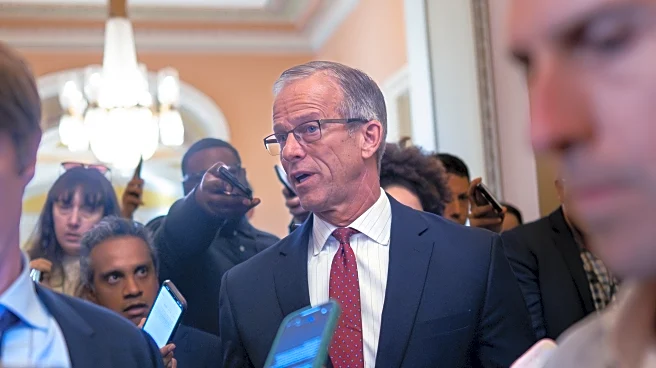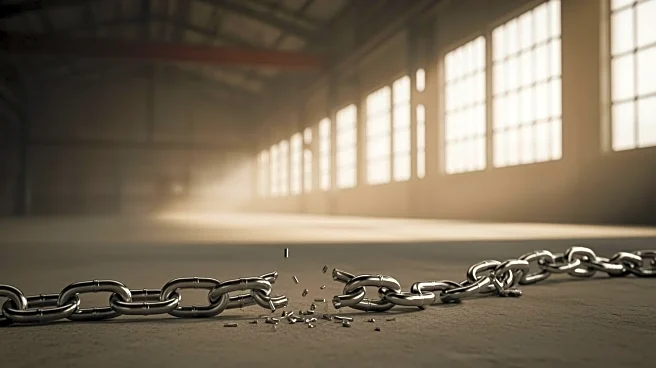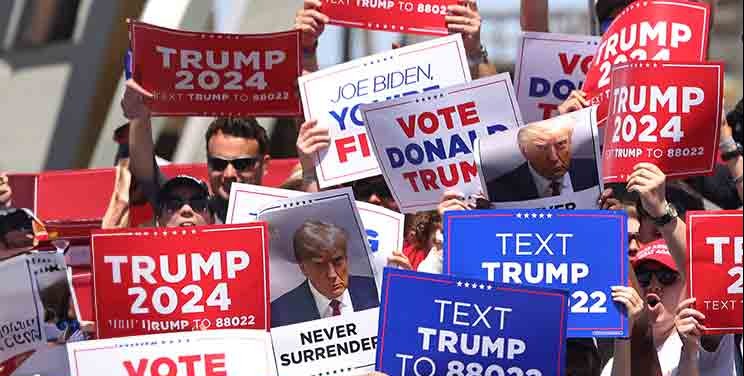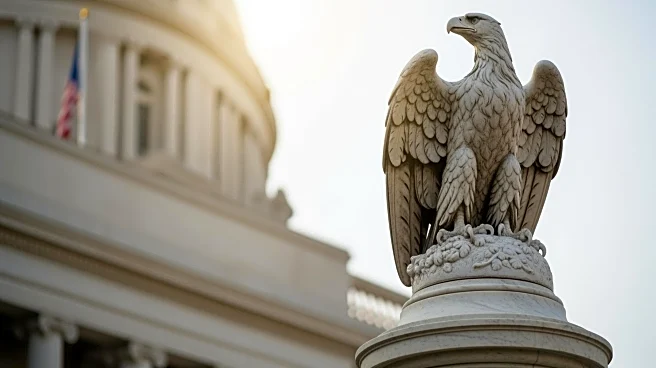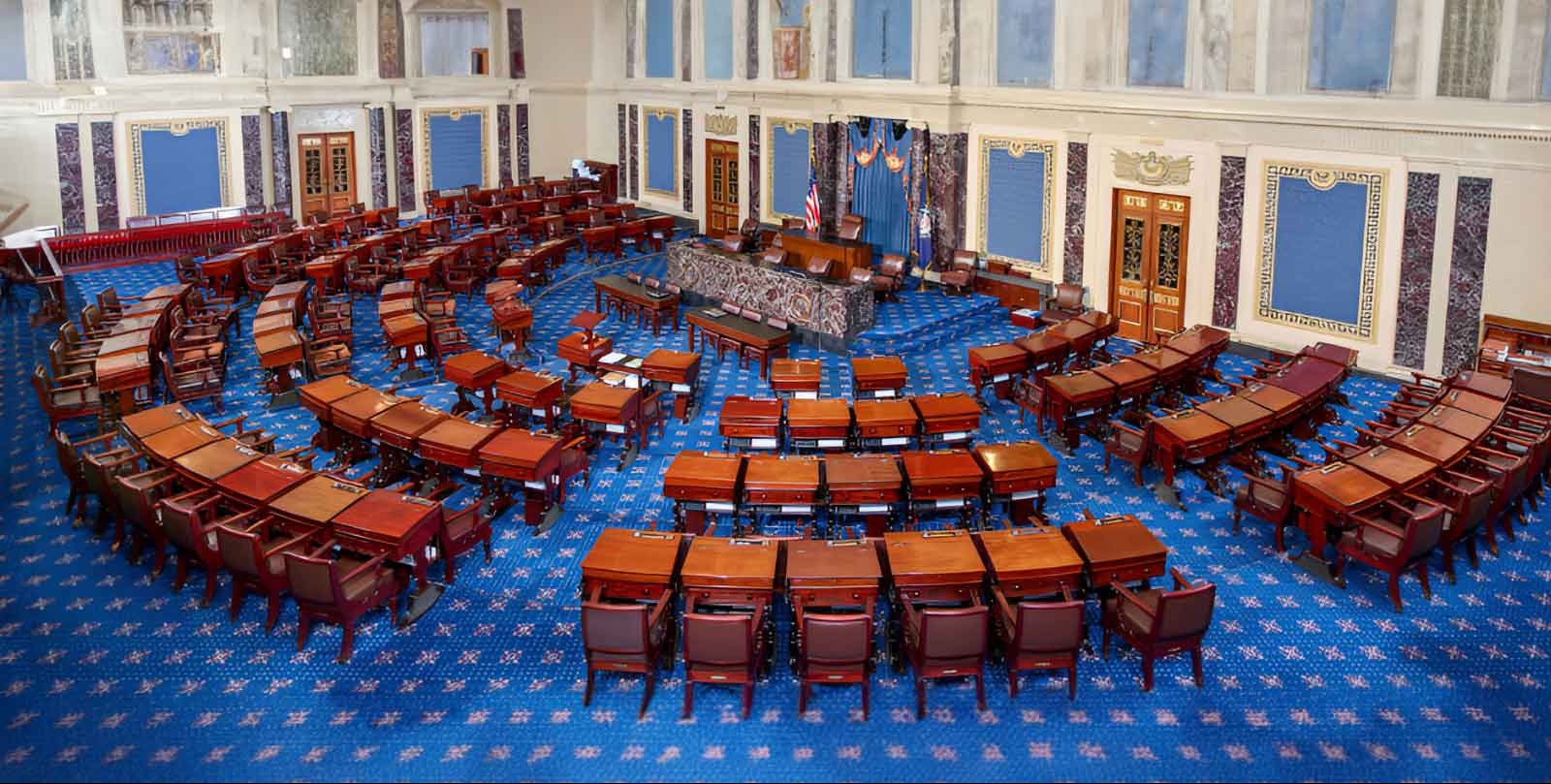What's Happening?
The ongoing government shutdown, now in its fourth week, is poised to become one of the longest in U.S. history. Unlike previous shutdowns, Congress has not passed any appropriations bills to keep parts
of the government funded. The White House is considering laying off thousands of workers and withholding back pay, despite a law requiring payment for furloughed employees. The shutdown is expected to reduce annual economic growth by 0.1 to 0.2 percentage points each week, translating to billions in lost economic output. Essential services, such as national park tours and drug reviews, are halted, affecting commerce and business operations.
Why It's Important?
The prolonged shutdown poses significant risks to the U.S. economy, particularly as the holiday season approaches. The loss of government services and employee paychecks could lead to decreased consumer spending and business activity. The potential withholding of back pay for furloughed workers could exacerbate economic uncertainty and impact household finances. The shutdown's effects on commerce and public services may have long-term implications for economic stability and growth, affecting various sectors and stakeholders.
What's Next?
If the shutdown continues, pressure will mount on Congress and the administration to reach a resolution. Stakeholders, including businesses, workers, and public service providers, will likely advocate for swift action to restore government operations and mitigate economic impacts. The situation may lead to increased political tensions and negotiations, with potential compromises or legislative actions to address funding issues. The outcome will be critical for economic recovery and stability.


